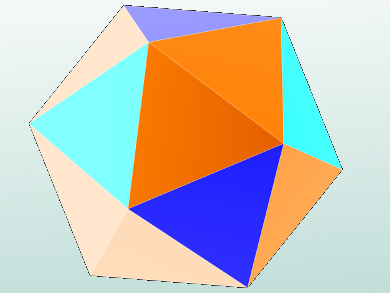Normally, crystals are strictly symmetrical. However, in 1982, Daniel Shechtman, Technion – Israel Institute of technology, Haifa, discovered quasicrystals. In these types of crystals, the regular arrangement is broken up and several different basic forms alternate.
Such structures were long regarded as “impossible” in nature. However, Paul Steinhardt, Princeton University, NJ, USA, and his colleagues have already discovered two natural representatives of such quasicrystals in recent years. Both come from the Khatyrka meteorites discovered in Siberia in 2011. One of the quasicrystals resembles a ten-cornered disc stack, the other is based on icosahedral basic elements.
In the same meteorite, the scientists have discovered a third quasi-crystal. It is a mineral with the composition Al62.0(8)Cu31.2(8)Fe6.8(4). The basic geometric unit of the quasicrystal resembles an icosahedron. The composition is outside the measured equilibrium stability field at standard pressure of the Al-Cu-Fe quasicrystals reported previously. The compound is the first quasicrystal whose composition was found in nature before being synthesized in the laboratory.
The researchers suspect that the quasicrystals owe their origin to the extreme conditions they were exposed to in the meteorite. Earlier analyses have shown that the Khatyrka meteorite experienced a collision in space, and was exposed to a pressure of up to 5 GPa and heated to 1,200 °C.
- Collisions in outer space produced an icosahedral phase in the Khatyrka meteorite never observed previously in the laboratory,
Luca Bindi, Chaney Lin, Chi Ma, Paul J. Steinhardt,
Sci. Rep. 2016.
DOI: 10.1038/srep38117
Also of Interest
- Second Natural Quasicrystal Discovered,
Veronika Belusa
ChemistryViews.org 2015.
Researchers have discovered a previously unknown natural quasicrystal in a 4.5 billion year old meteorite - Dan Shechtman: Succeeding in Science,
Vera Koester, Christian Remenyi,
ChemViews Mag. 2013.
DOI: 10.1002/chemv.201300112
Nobel Laureate Dan Shechtman talks about the reason why quasicrystals weren’t discovered earlier and his unerring belief in his experiments




